Francis Bacon, Francophile
Bacon spoke French and was a passionate Francophile. He looked to the French as the ultimate arbiters in virtually every field that interested him. He often admitted that their opinion of his work was what mattered most to him, and it was undoubtedly in Paris that he was most highly regarded and unanimously acclaimed.
Francis Bacon
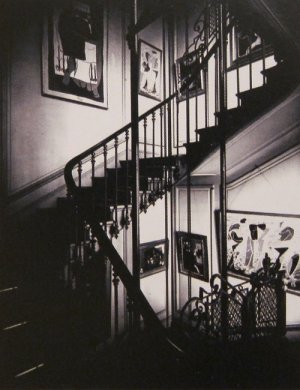
1926-1929 | Early experiences of Paris
In 1926, at the age of sixteen, Francis Bacon ran away from home and made his way to Paris, but his adventure was cut short by his parents, who promptly fetched him back. He returned to Paris in the spring of 1927. During his stay there, he met Yvonne Bocquentin, who took him under her wing and offered him a room in her house near Chantilly. She taught him French and introduced him to Parisian artistic circles. When visiting an exhibition at Paul Rosenberg’s gallery, Bacon saw Picasso’s work for the first time. It catalysed his artistic vocation.
In autumn 1927, he moved to Paris, staying at the Hôtel Delambre in the Montparnasse district. At that time, Montparnasse attracted writers and artists from all over the world. Bacon was also lured by the ambience of the Pigalle neighbourhood, where everyone could give free rein to their rawest instincts and reveal their inner nature. In Paris, he seized eagerly on French magazines such as Documents, which was edited by Georges Bataille, Cahiers d’Art and Minotaure, and purchased Ludwig Grünwald’s medical book Atlas-Manuel des maladies de la bouche, du pharynx et des fosses nasales, published in 1903, which contained hand-painted illustrations showing various diseases of the mouth. It was to become one of the source materials for his own depictions of the human scream. The experience of Paris, with its intellectual excitement, sexual freedom and savoir-vivre, made a deep impression on the young Bacon. His sojourn in Paris ended in late spring 1929, when he moved to London.
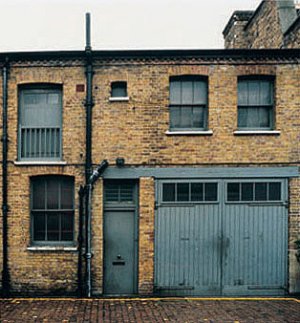
1929-1992 | London's French quarter
Bacon left Paris for London in the spring of 1929. In January 1930, he set up home at 17 Queensberry Mews West, South Kensington, a former garage where he lived and from which he worked as a furniture and rug designer until 1931.
From late 1929 to his death, Bacon’s London residences were mainly in South Kensington, a district with a high concentration of French residents.
In the 1930s, the presence of the French Consulate, the Lycée Français and the Institut Français attracted French expatriates to South Kensington. With its cafés, French bakeries, restaurants, cinemas and continental bookshops, it felt like home to them ‒ and to Francis Bacon.
His legendary studio and living quarters at 7 Reece Mews, which was his London pied-à-terre from 1961 until the end of his life, was a stone’s throw away from the Institut Français and the Lycée, now known as the Lycée Français Charles de Gaulle.
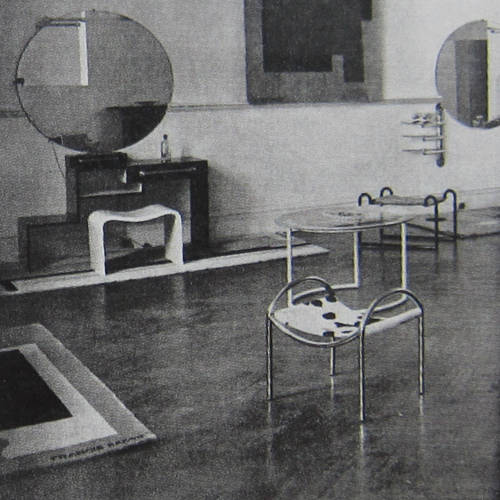
1929-1933 | The influence of French design
From 1930 to 1931, Bacon lived at 17 Queensberry Mews West, South Kensington, a converted garage which he used as his studio, showroom and living quarters. There, he produced his first paintings and set himself up as a furniture and rug designer, despite having no prior training. In November 1930, Bacon held an exhibition of his paintings and rugs at 17 Queensberry Mews West alongside works by Roy de Maistre and Jean Shepeard. His designs were influenced by Bauhaus, inspired by a brief sojourn in Berlin in 1927, and by the work of French modernists such as Charlotte Perriand, André Lurcat, Marcel Breuer, Pierre Chareau and Robert Mallet-Stevens, as well as by Eileen Gray and Le Corbusier. The geometry of some of his furniture foreshadowed significant elements of his paintings and his experience with interior spaces and predilection for mirrors, tubular steel furniture and curtains never left him and subsequently resurfaced in his paintings.
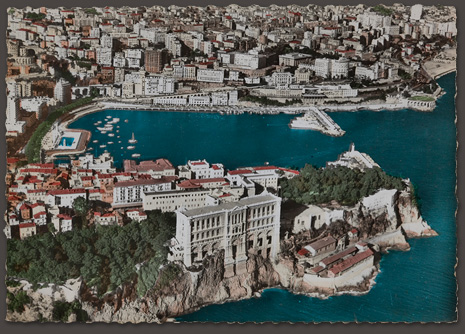
1940-1990 | Monaco
As he indicated in an interview with David Sylvester in 1984, Francis Bacon seems to have visited the Principality of Monaco for the first time in 1935. A few years later, a letter dated 3 June 1940 was sent to him in Monaco by his cousin, Diana Watson, informing him of his father’s death.
Bacon moved to Monaco in 1946, immediately after selling Painting 1946. The Principality was to be his chief place of residence from 5 July 1946 until the early 1950s. He was a seasoned gambler, and soon yielded to a passion for Monte Carlo’s Belle Époque casino that could be described as obsessive. According to those close to him and by his own account, he would spend hours at the gaming tables. Nonetheless, in correspondence, he often said how much work he managed to do in Monaco, despite its many distractions, and indeed, he painted some of his finest pictures there. The Monaco years saw the emergence of some of his most important ideas and played a decisive part in the gestation of his future compositions.
Bacon was charmed by the atmosphere and lifestyle of Monte Carlo. He appreciated the Mediterranean landscapes and the beneficial effect of the sea air on his asthma; and as a bon viveur, he revelled in the opportunities it offered to enjoy the best French wines and cuisine. After ceasing to live in Monaco, he often went back to stay there ‒ a habit that lasted for the rest of his life.
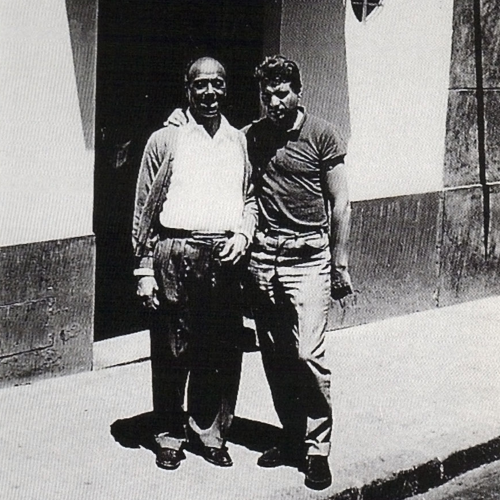
From 1956-1980s | Stays in Tangier
From 1956 to the early 1960s, Bacon made frequent trips to Tangier to visit his lover and muse, Peter Lacy, who had moved there in 1955 and lived there until his death in 1962.
Until the late 1950s, Tangier was a French protectorate. It offered the advantages of an international zone and held powerful attractions for artists, writers, Hollywood actors, speculators, all kinds of traffickers and the homosexual community.
When Bacon visited Tangier in the late 1950s and early 1960s, he stayed in various hotels, among them the Hôtel Cecil, the Hôtel Rembrandt, the Villa Muniria and the Hôtel El Minzar, and rented studios to work in. In Tangier, he met the writers William Burroughs, Paul Bowles and Allen Ginsberg and a young artist called Ahmed Yacoubi. The city’s sexually liberated ambience reminded him of his early years in Berlin and Paris. His favourite hangout, Dean’s Bar, where Lacy worked as a piano player, was patronised both by members of the political and intellectual elites and denizens of the underworld.
Francis Bacon went back to Tangier with close friends and lovers on several occasions up to the 1980s.
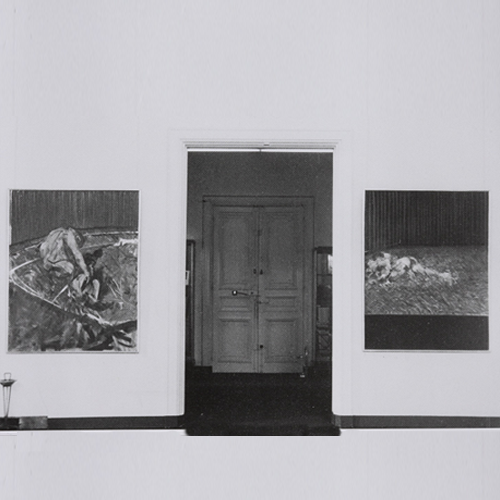
© Galerie Rive Droite
1957 | Galerie Rive Droite, Paris
Francis Bacon’s first solo exhibition in France was held at the Galerie Rive Droite in Paris, from 12 February to 10 March 1957. It was mounted by Jean Larcade and Erica Brausen and comprised twenty-one paintings.
The British Surrealist painter and poet Roland Penrose, who co-founded the Institute of Contemporary Art, wrote the introduction to the exhibition catalogue, which also included an essay by David Sylvester, one of the best art critics writing at the time.
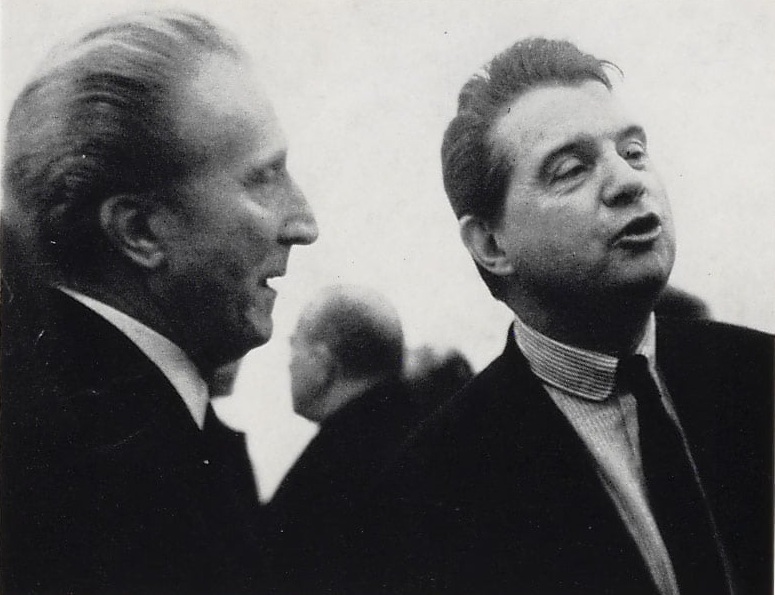
1966 | Galerie Maeght, Paris
From 15 November to 31 December 1966, the Galerie Maeght held a highly successful Francis Bacon exhibition that cemented the artist’s reputation: from then on, it went from strength to strength. He attended the private view with George Dyer, Sonia Orwell, David Plante, Isabel Rawsthorne and Stephen Spender. The gallery published a themed issue of the journal Derrière le miroir devoted to Bacon, with a preface by Michel Leiris.
Bacon’s monumental triptych Three Figures in a Room (1964) was presented in the exhibition. In 1968, it was purchased by the French state.
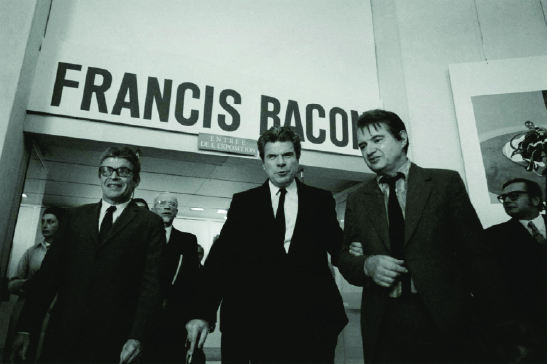
© André Morain
1971 | Grand Palais, Paris
The Francis Bacon retrospective held at the Grand Palais from 27 October 1971 to 10 January 1972 was the ultimate accolade in the Parisian art world. At the time, Bacon was one of only two living artists to have been granted such an honour ‒ the other being Picasso. He saw this exhibition, held in the city he loved most, as the most important in his entire career. With 108 of his works on display in the legendary temple of culture, Bacon had joined the French artistic pantheon. He produced over twenty oil paintings, including five large triptychs, especially for the retrospective. It was a triumph, but it was marred by the tragic death of his companion, George Dyer, at the Hôtel des Saints-Peres two days before the private view, which was attended by French officials, representatives of major cultural institutions, leading figures from the art world, and Bacon’s close friends. Michel Leiris and Bacon’s old friend Sonia Orwell organized a dinner for the occasion at Le Train Bleu: guests included Jacques Duhamel, the French minister of culture, the writer Marguerite Duras, the artist David Hockney and the poet Jacques Dupin.
Francis Bacon
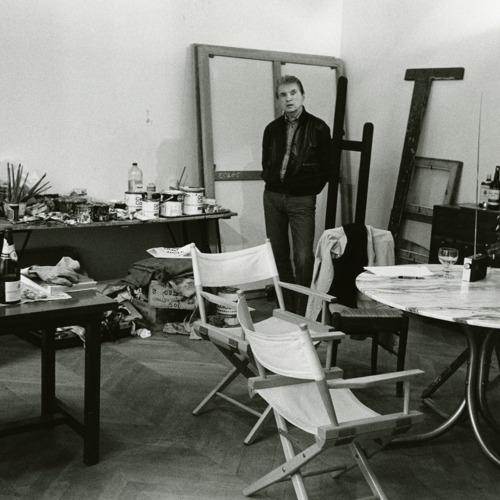
1974-1987 | A pied-à-terre in Paris
After the success of his Grand Palais retrospective in 1971, Francis Bacon began to spend more time in Paris, which soon became his favourite haunt. In 1974, he took a flat that doubled as a studio at 14 rue de Birague, in the Marais, a neighbourhood steeped in history. His circle of friends steadily grew and his friendship with people he already knew, such as Michel Leiris and Jacques Dupin, deepened. In 1975, he met art historian Eddy Batache and art consultant Reinhard Hassert, who were to become two of his closest friends and confidants. During the last eighteen years of his life, he spent much of his time in Paris, producing a body of work that included a series of portraits and self-portraits in his flat-cum-studio. He told the French writer Franck Maubert, “I always paint in daylight, and I love the light in Paris. I prefer it to the light in London.”
Bacon gave up his Parisian pied-à-terre in 1987 but continued to make regular trips to Paris until the end of his life.
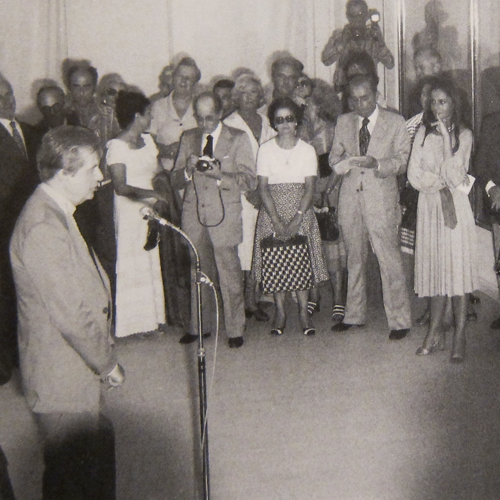
1976 | Musée Cantini, Marseille
From his first trips to the South of France and Monaco, Francis Bacon had been attracted to the cosmopolitan Mediterranean port city of Marseille, whose ambience reminded him of Tangier.
From 9 July to 30 September 1976, several years after his successful retrospective at the Grand Palais, he had his first exhibition outside Paris, at the Musée Cantini in Marseille. It was curated by Marielle Latour under the august patronage of Gaston Defferre, who was mayor of the city and one of the most influential politicians in France at the time. Bacon showed sixteen of his recent paintings, including six large triptychs. Gaston Defferre wrote the preface to the exhibition catalogue.
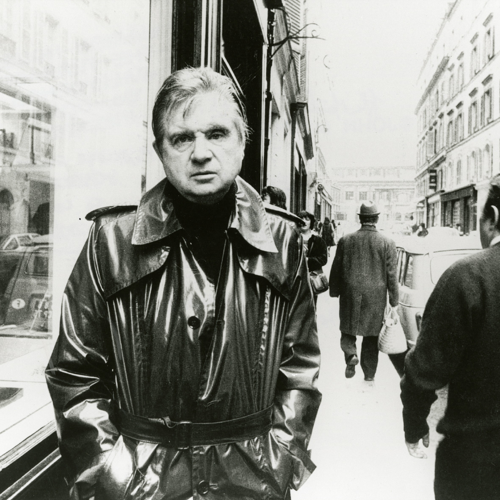
1977 | Galerie Claude Bernard, Paris
From 19 January until 26 March 1977, the Galerie Claude Bernard in Paris showed twenty-one of Bacon’s recent paintings. Michel Leiris wrote the preface to the exhibition catalogue. Of his shows in commercial galleries, it was one of Bacon’s favourites. It was so popular that the police had to cordon off the rue des Beaux-Arts to contain the throng of visitors. For the Parisian press, Bacon had attained the status of a living legend.
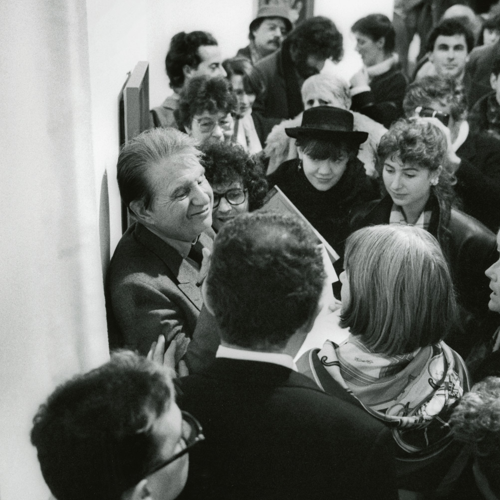
Photo: Michel Nguyen, MB Art Collection © Michel Nguyen
1984-1987 | Galerie Maeght-Lelong and Galerie Lelong, Paris
Bacon had two landmark shows during the 1980s, one in January 1984 at the Galerie Maeght-Lelong and the other in September 1987 at the Galerie Lelong. The catalogue of the 1984 exhibition included texts by Jacques Dupin and Michel Leiris and an interview with Francis Bacon by David Sylvester.
In the wake of the second exhibition, the newspaper Le Monde devoted a front-page article to it and the French media referred to the ‘Bacon myth’.